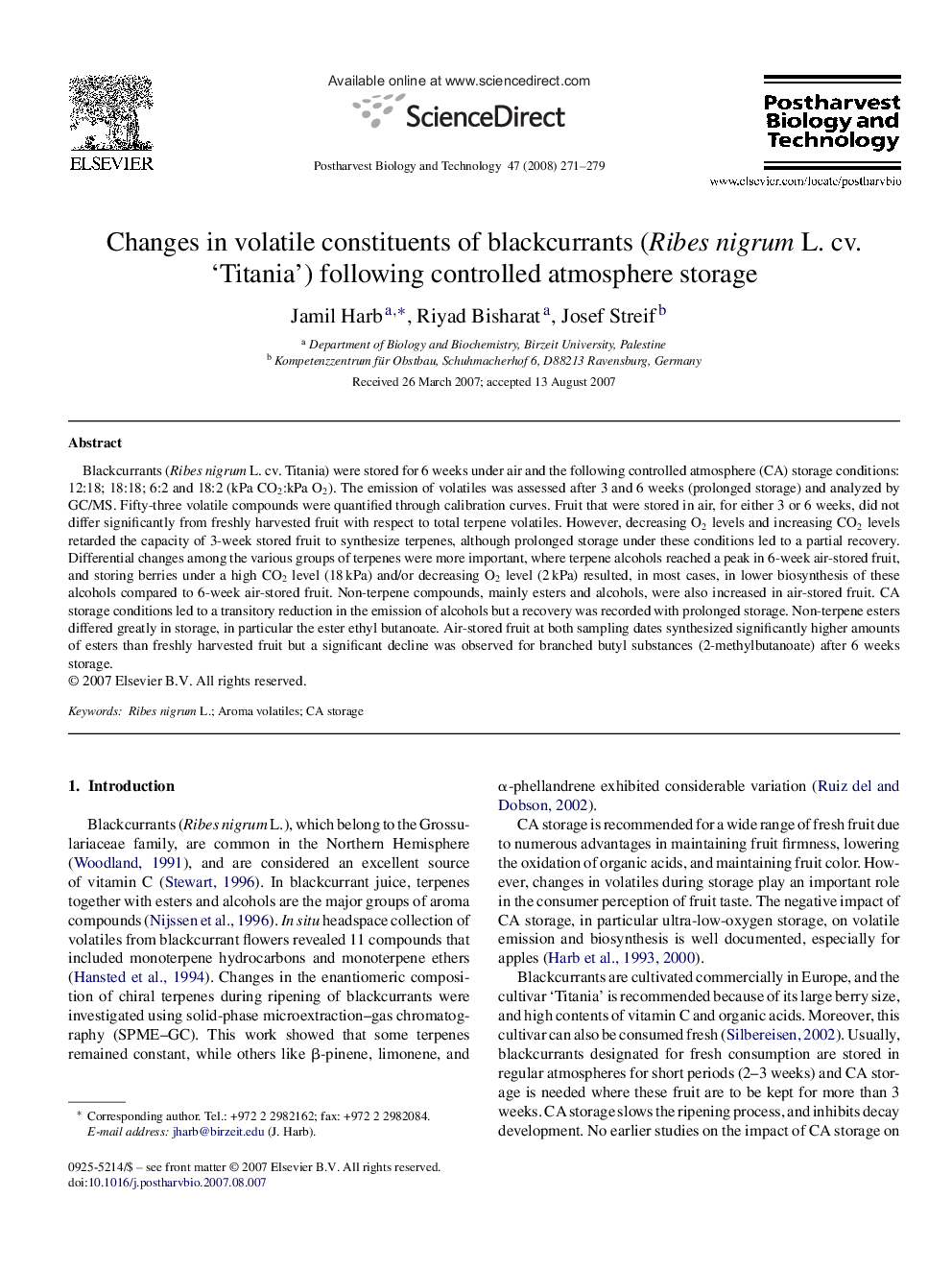| Article ID | Journal | Published Year | Pages | File Type |
|---|---|---|---|---|
| 4519729 | Postharvest Biology and Technology | 2008 | 9 Pages |
Blackcurrants (Ribes nigrum L. cv. Titania) were stored for 6 weeks under air and the following controlled atmosphere (CA) storage conditions: 12:18; 18:18; 6:2 and 18:2 (kPa CO2:kPa O2). The emission of volatiles was assessed after 3 and 6 weeks (prolonged storage) and analyzed by GC/MS. Fifty-three volatile compounds were quantified through calibration curves. Fruit that were stored in air, for either 3 or 6 weeks, did not differ significantly from freshly harvested fruit with respect to total terpene volatiles. However, decreasing O2 levels and increasing CO2 levels retarded the capacity of 3-week stored fruit to synthesize terpenes, although prolonged storage under these conditions led to a partial recovery. Differential changes among the various groups of terpenes were more important, where terpene alcohols reached a peak in 6-week air-stored fruit, and storing berries under a high CO2 level (18 kPa) and/or decreasing O2 level (2 kPa) resulted, in most cases, in lower biosynthesis of these alcohols compared to 6-week air-stored fruit. Non-terpene compounds, mainly esters and alcohols, were also increased in air-stored fruit. CA storage conditions led to a transitory reduction in the emission of alcohols but a recovery was recorded with prolonged storage. Non-terpene esters differed greatly in storage, in particular the ester ethyl butanoate. Air-stored fruit at both sampling dates synthesized significantly higher amounts of esters than freshly harvested fruit but a significant decline was observed for branched butyl substances (2-methylbutanoate) after 6 weeks storage.
